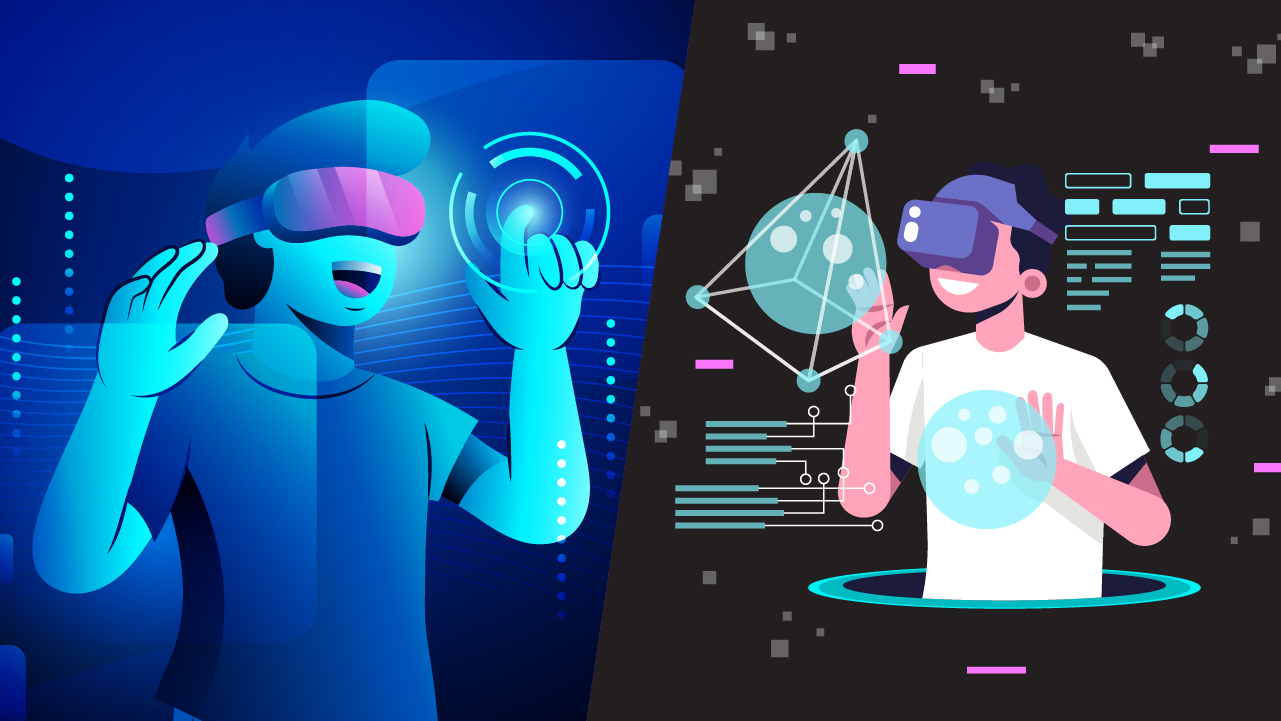Know the difference – VR vs MR Headsets:
With immersive technologies finding uses in almost all industries, VR and MR have become the preferred technology among the businesses looking to invest in them.
Although Mixed Reality (MR) is an extension of Virtual Reality (VR), they still have some notable differences. Especially when it comes to their headset. In this blog, we will disassemble the components of both VR and MR headsets and see how different (or similar) they are.
MR Headsets:
Sensors:
MR Headset uses a variety of sensors and cameras to track the user’s location and movements. These sensors allow the device to map the user’s surroundings and place digital objects in the real world. For example, the Microsoft HoloLens can place a virtual TV in your living room, or the Oculus Rift can place you in the middle of a virtual battlefield.
This mapping technology is essential for MR devices to create realistic and believable experiences. However, it also comes with some limitations. Mapping technology is still in its early stages, and it can be inaccurate at times. This can lead to some MR experiences feeling less than perfect.
Display Technology
This is what allows users to see the virtual world around them. Currently, there are two main types of display technology used in MR devices: stereoscopic displays and holographic displays.
Stereoscopic displays use two separate images to create the illusion of depth. These images are then combined with the headset’s lenses to create a 3D effect. Holographic displays, on the other hand, use light projection to create digital objects that appear to float in midair.
Both of these technologies have their own advantages and disadvantages. Stereoscopic displays are more common because they are cheaper and easier to produce. However, they can cause eye strain and can be difficult to update. Holographic displays are more expensive and harder to produce, but they offer a more realistic and immersive experience.
Audio Technology
The final key technology for MR headsets is audio. Audio is crucial for creating a convincing and immersive experience. Currently, there are two main types of audio used in MR devices: binaural audio and spatial audio.
Binaural audio is the most common type of audio used in MR devices. It uses two separate audio channels to create a realistic 3D soundscape. Spatial audio is a newer technology that uses special algorithms to create a more authentic sense of distance and direction.
Binaural audio is more common because it is cheaper and easier to produce. However, it can be difficult to mix and can sound unnatural at times. Whereas spatial audio is more expensive and harder to produce but offers a more genuine experience.
MR headsets aspire to provide the most lifelike experience in the metaverse. What’s more? They have a range of use cases, from being used in teaching to sports coaching. As the technology gets more refined, we can expect to see MR headsets become more popular and accessible.
VR Headsets:
An array of sensors
Unlike 2D video, virtual reality is not a passive experience. Users interact with virtual worlds, which adapt according to the user’s continuous inputs.
To achieve this, VR headsets come with a number of sensors, and some devices even have a six degrees of freedom (6DoF) system for head tracking.
Using gyroscopes, accelerometers, and other sensors, a 6DoF system tracks head movements and repositions the display accordingly. Some headsets also have eye-tracking sensors that can understand when eyes focus on a VR object or location.
Lenses and screens
The lenses and screen setup make up the bulk of the VR headset’s hardware. There are stereoscopic lenses positioned between the screen and your eyes that distort the image into appearing three-dimensional.
Two images are passed through the lens, one for each eye, similar to how our eyes perceive and process visuals in the real world. Additionally, images in VR headsets appear to move side-to-side to recreate a 360-degree experience, and are achieved by subtly moving the display content in response to head-tracking data.
Immersive Audio
A stereo audio feed comes from two directions or one for each ear, but in the real world, users have a much more layered experience of sound where audio is directly linked to our perception of distance and space.
VR headsets mimic this experience using 360-degree or immersive audio technology. Binaural audio is one such technology, and the new spatial audio pioneered by companies like Apple, marks another milestone in VR audio innovation.
Controllers
Finally, VR headset controllers are your bridge between the real and the virtual worlds. Interestingly, there are a variety of controllers you can use, apart from the usual set of two handheld controllers that come with most headsets.
Vive is dual hand controlled, though one controller can be used but vive has dual controllers, look into it and fix this part.
Meta reportedly has developed a set of haptic-based controllers in the works that could enable pressure-sensitive touch and navigation. Also, Valve Index has a unique take on controllers that incorporates a fist-gripping design.




